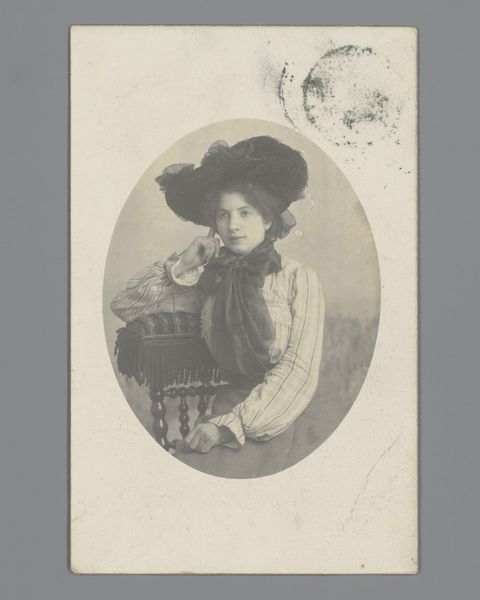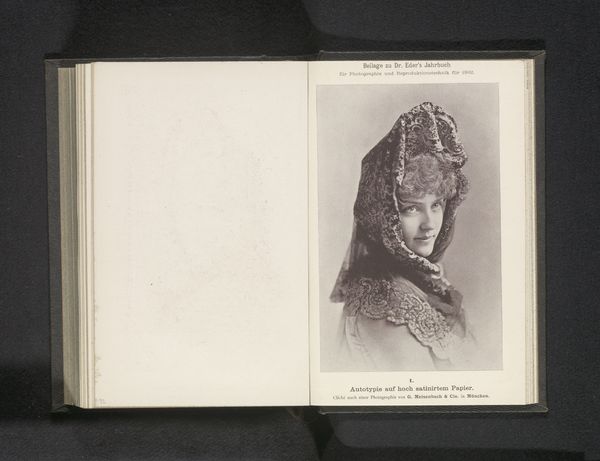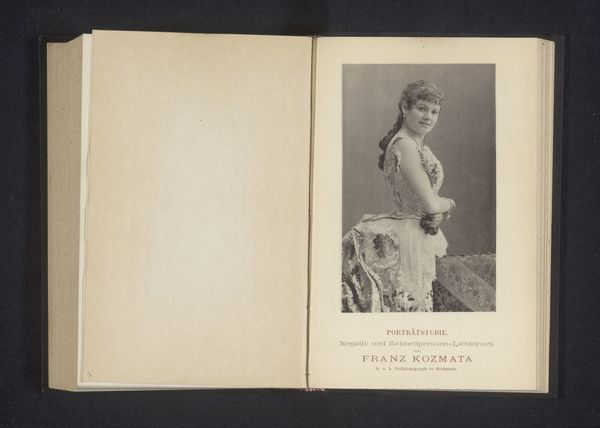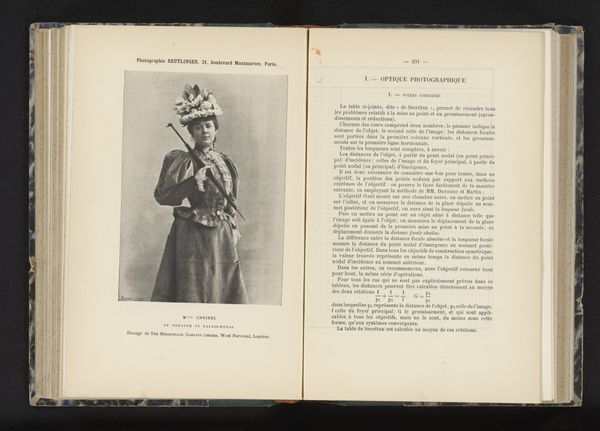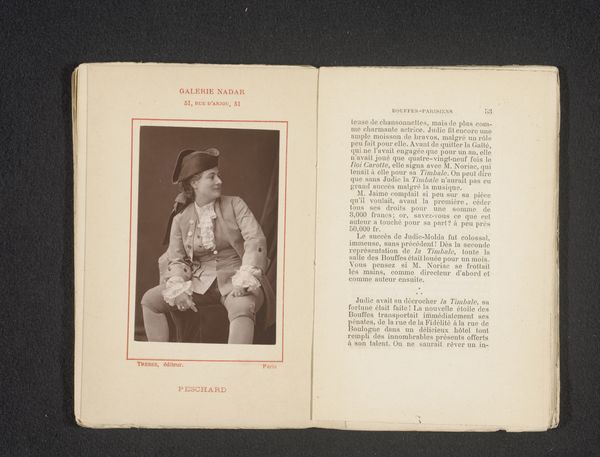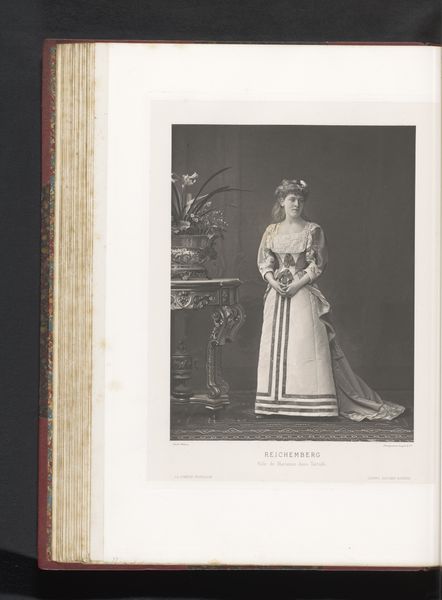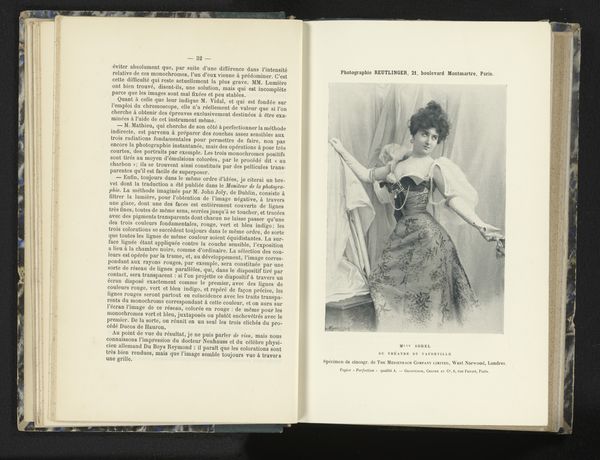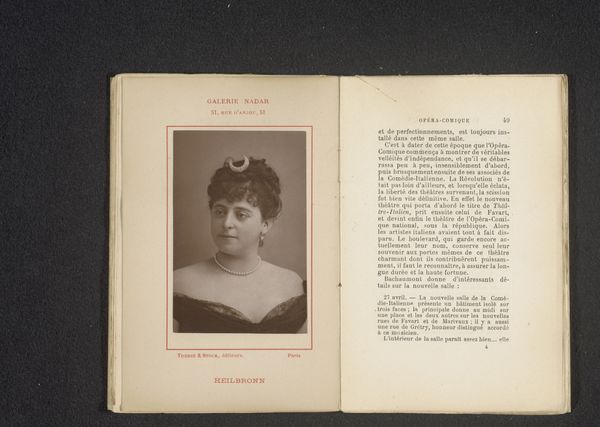
#
aged paper
#
homemade paper
#
paper non-digital material
#
ink paper printed
#
sketch book
#
paper texture
#
personal sketchbook
#
golden font
#
paper medium
#
historical font
Dimensions: height 144 mm, width 88 mm
Copyright: Rijks Museum: Open Domain
Curator: Looking at this intriguing print, dated to before 1889 and titled "Portret van een onbekende vrouw", I’m immediately struck by its stillness and sense of formality. Editor: There's a striking contrast here, between the woman’s opulent lace collar and large hat and the rather humble appearance of the aged paper it’s printed on. It makes me consider who had access to commissioning or owning such items in the 19th century, versus the access to the process of portrait printing on this paper medium. Curator: I'm interested in the symbols of status. That extravagant hat and elaborately ornamented dress signal a certain level of social standing, don't they? We read those signs even today. The pose itself—self-contained, slightly reserved—also contributes to this image of dignified composure. Editor: Precisely. The texture of this handmade paper gives the work a unique material quality that resists notions of art created solely for wealthy elites. There are clear clues of labor involved in producing both the image itself and the substrate on which it’s printed; this connection makes it feel incredibly grounded. Curator: Do you think the unknown identity of the sitter amplifies the symbolic weight of her attire and presentation? I wonder what her story could have been if only we knew her name. She exudes a distinct aura, doesn't she? Editor: The label beneath the image tells us it is a "Leimtypie", and was produced by taking a "negative direct from life." That places even greater emphasis on the reproducible technology behind creating this image. I find this a much more salient part of her story. It reminds us that mass-produced imagery altered the role of the unique portrait itself and the individual identity she wants to express. Curator: Perhaps that very tension, between the sitter's individual presence and the mechanically reproduced nature of the image, makes this a compelling piece of art. It presents status while also representing technological change. Editor: Indeed. It opens up an investigation into the socio-economic transformations experienced at the time. Considering how accessible mass produced materials like paper opened doors to the rising middle classes helps make a portrait such as this much more human, no? Curator: It certainly shifts the focus from an elite, inaccessible figure to a person existing within reach and in an exciting moment of technological advancement. Editor: A perfect intersection of personal presence and societal forces, captured on paper!
Comments
No comments
Be the first to comment and join the conversation on the ultimate creative platform.
